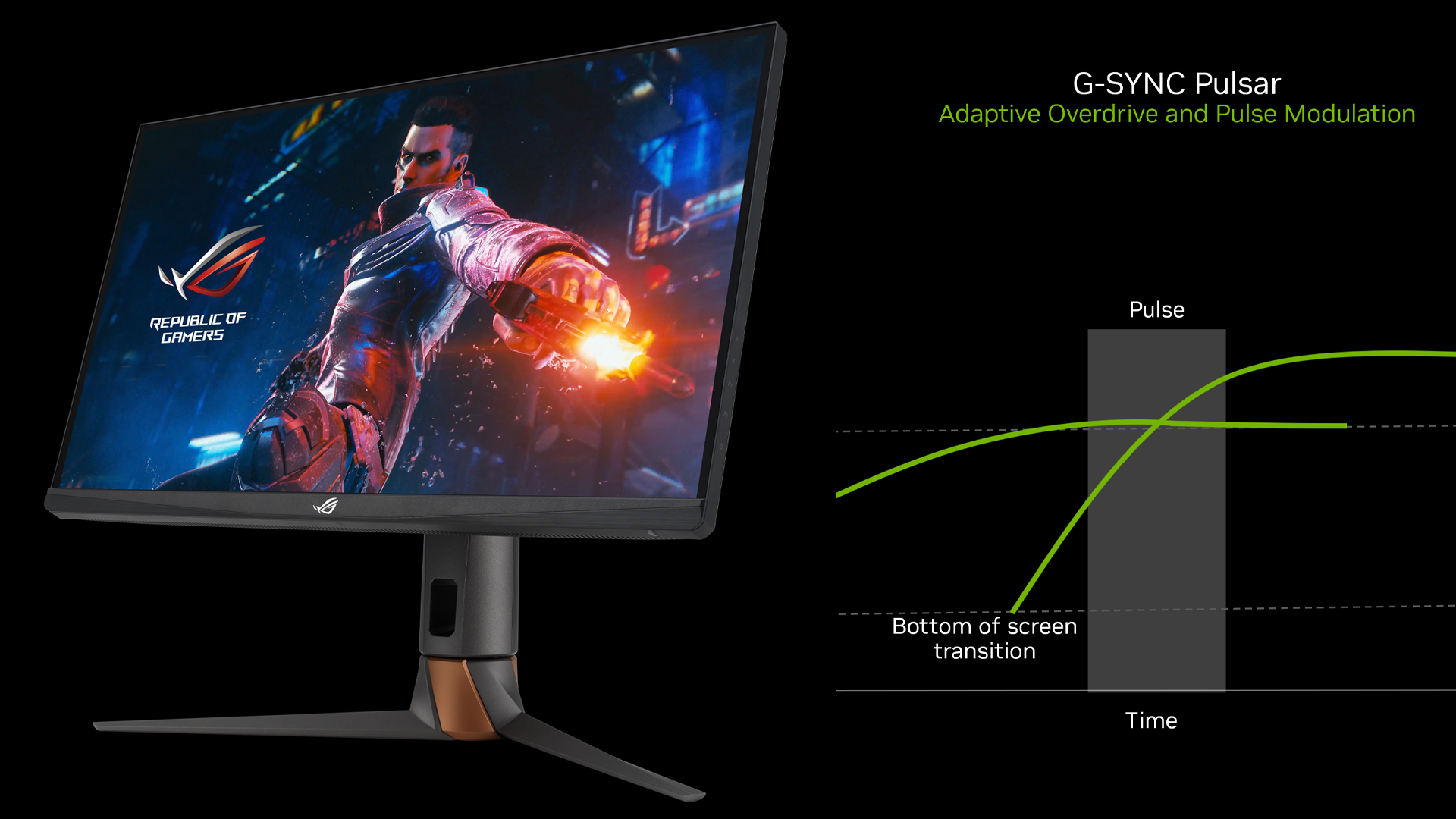
Let me give you a free piece of advice: never go out of your way to find out when something you love was first released. The almost inevitable consequence is you’ll end up feeling absolutely ancient. That was the case with this computing editor the other day when I found out Nvidia first launched G-Sync all the way back in 2013.
I absolutely adore Nvidia G-Sync. As a dedicated PC gamer who has thrown waaaaay too much cash building high-end rigs throughout the years, I can honestly say it’s my favorite innovation in PC gaming over the past decade. It was the first form of VRR (Variable Refresh Rate), and it’s a feature that nearly all high-end TVs with dedicated game modes now come installed with.
In case you don’t know what G-Sync is, it’s a type of display tech that first appeared in monitors, then was gradually rolled out for gaming laptops, and more recently, TVs. In essence, its main purpose is to eliminate stuttering while playing a video game. How does Team Green’s technology achieve this? By matching a display’s refresh rate with the frame rate output from your GPU.
G-Sync's main purpose is to eliminate stuttering while playing a video game.
I realize that sentence sounds roughly as sexy as a bowl of celery soup, but in gameplay terms, it can really make a huge difference.
I’ve probably owned half a dozen G-Sync monitors since the tech first debuted, and as someone who obsesses over frame rates, it’s made me sweat way less over my in-game fps.
As a recent example, G-Sync has made replaying the awesome PC port of Red Dead Redemption 2 on my Samsung Odyssey OLED G9 a joy. Thanks to the monitor’s G-Sync features, I can’t feel frame rate dips even when my on-screen Fraps counter is showing me that the cowboy-killing action is swaying between, say, 85 and 110 fps.
Raising the Pulsar

Why am I bringing up a decade-old piece of display tech now, though? Good question. It’s because this week, during its presentation at CES 2024, Nvidia revealed G-Sync Pulsar: It's the next major evolution in the stutter-smoothing screen technology.
On its official site, Nvidia claims Pulsar represents “the next evolution of Variable Refresh Rate technology, not only delivering a stutter-free experience and buttery smooth motion, but also a new gold standard for visual clarity and fidelity through the invention of variable frequency strobing.” That’s quite the mouthful to break down, but let me give it a crack anyway.
Pulsar’s core purpose is to not only to continue to provide stutter-free gameplay experiences, but also to significantly boost the clarity of in-game motion. If a picture is worth a thousand words, then hopefully this short clip of Pulsar in action will be worth a million of my rambling ones…
Basically, the main goal of Pulsar is to help eliminate motion blur, though don’t get this confused with the type of motion blur you can turn on or off via a slider in many modern games. Instead, Pulsar is trying to kibosh display motion blur that in Nvidia’s own words stems from a combination of “slow LCD transitions” and “slow pixel transitions that can’t keep up with fast-moving objects, leading to a smear effect.”
So how exactly does Pulsar work? Without wanting to get overly techy, Nvidia has come up with an algorithm that, again, in the firm’s own words, “dynamically adjusts strobing patterns to varying render rates”. And in a follow-up sentence that will probably make your head spin, Nvidia's technology “marks a significant breakthrough by synergizing two pivotal elements: Adaptive Overdrive and Pulse Modulation.” Honestly, I think I need to lie down for a couple of minutes.
Bottom line: Pulsar should make games look a whole lot cleaner and easier to track in action — a notion that should make fans of first-person shooters (where being milliseconds off the draw can spell the difference between virtual life and death), very excited.
Any form of display tech that clean up image clarity during fast-paced gameplay is cause for celebration.
In my book, any form of display tech that helps clean up image clarity during fast-paced gameplay is something to be celebrated. As a former video game journo, I detest most forms of in-game motion blur — mainly because the feature absolutely screws up screenshots when you’re trying to review a game. The prospect of Pulsar delivering all the frame rate-smoothing goodness of traditional G-Sync with the added bonus of boosting motion clarity has this display dweeb drooling.
The first monitors that will be graced with G-Sync Pulsar are the ones in the Asus ROG Swift PG27 Series lineup. These displays are launching later this year and they were among the best monitors at CES 2024 this week. There are a whole bunch of new G-Sync compatible monitors and TVs being released in 2024 from the likes of Alienware, AOC, LG, Philips and ViewSonic, so I highly doubt the ROG Swift PG27 will be the only display that gets treated to Pulsar this year.
Suffice to say, Nvidia’s new breakthrough tech has got my Pulsar going.
Sorry, not sorry.







